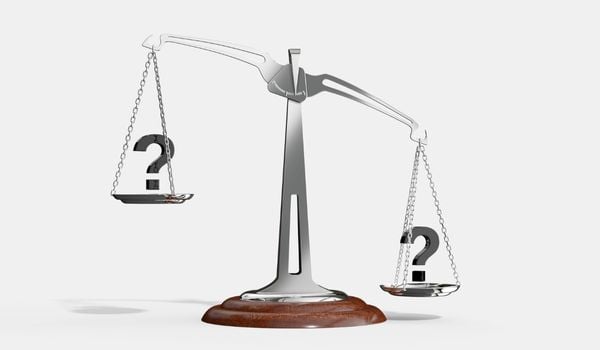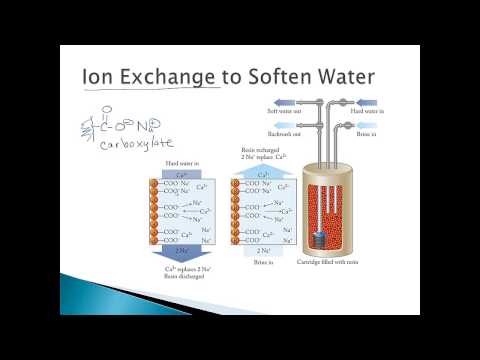If your water leaves spots on dishes, stains the tub, or smells metallic — chances are you’re dealing with something this method was designed to handle.
While it’s best known for softening hard water, the same technology is also used to tackle other tough contaminants — from nitrates to lead. It works by trading out unwanted particles in your water for something safer, one ion at a time.
Curious how softeners actually work? Or thinking about a filter for tricky pollutants?
By knowing the process will allow you to find the right fix for your home.
🧪 Key Takeaways
- 🔄 Swaps harmful or excess minerals with safer alternatives using a resin bed
- 💧 Commonly used to reduce calcium, magnesium, nitrates, lead, and more
- ♻️ Resin regenerates automatically with a brine or acid rinse
- 🧬 Can treat both aesthetic and health-based water issues
- 🏠 Most units are installed at the point of entry for full-home coverage
- ⚠️ Some setups may require prefiltration to protect the system from fouling
⚙️ How Does This Process Work?

This method works by swapping out one type of charged particle in your water for another. Think of it like a magnet trade — unwanted ions stick to the resin inside the filter, while safer ones take their place.
Inside a softener, for example, the resin is negatively charged and grabs onto positively charged minerals like calcium and magnesium — the stuff behind hard water. Once the resin is full, the system flushes it with a salty brine to recharge it, washing the old minerals away and resetting the cycle.
This same swap-based approach can be used to remove other problematic ions too — but the type of resin makes all the difference.
🧪 What Kind of Resin Does What?
Different resins target different contaminants — so choosing the right type is key to making this system work for your water. Below is a breakdown of the four main resin categories and what each one does best.
| Type | Best For | How It Works |
|---|---|---|
| 💧 Strong Acid Cation (SAC) | Hard minerals like calcium & magnesium | Removes scale-forming ions; recharged with salt or acid |
| 🧂 Weak Acid Cation (WAC) | Highly alkaline water or extreme hardness | Softens and adjusts pH; works better in tough water conditions |
| 🧬 Strong Base Anion (SBA) | Nitrates, arsenic, fluoride, uranium | Swaps toxic anions with safer hydroxide ions |
| 🔄 Weak Base Anion (WBA) | Boosts efficiency of SBA resins | Absorbs acid in low-pH water — used alongside SBA |
🧠 Helpful to Know: Resin performance depends on your water chemistry. High iron, chlorine, or sediment can reduce lifespan. In many cases, adding a simple prefilter can dramatically boost performance and protect your main system.
🧪 Specialty Resins & Zeolite: What Makes Them Different?

Not all filters stick to the basics — some go the extra mile using advanced resins or natural minerals like zeolite. Here’s how they work:
⚗️ Specialty Ion Exchange Resins
These are engineered to remove hard-to-catch contaminants — think heavy metals or industrial runoff. One example?
- Chelating resins — specially designed to trap cobalt, mercury, and other toxic metals.
🪨 Zeolite (Natural or Synthetic)
This volcanic mineral is naturally porous, meaning it grabs contaminants like a sponge while also performing ion exchange. You’ll find it in:
- 💧 Countertop & pitcher filters
- 🏭 Industrial treatment systems
- 🛠️ Blended filtration media for tougher water challenges
💡 Good to Know: Zeolite has both adsorptive and ion-exchange powers. This makes it a solid choice for those that need a little bit more oomph than just softened water — especially in homes with: sediment, ammonia, or odor issues.
💭 Is This Better Than Other Filtration Methods?

Ion-based systems are excellent at what they do — but that doesn’t mean they’re the only choice. Whether this method is right for your home depends on what you’re trying to remove, how your water is used, and how your plumbing is set up.
Let’s compare 👇
| Filtration Type | What It Removes | Best Use |
|---|---|---|
| 🔁 Ion Exchange | Hard minerals, nitrates, heavy metals (when targeted) | Whole-house softening, targeted contaminant removal |
| 🧽 Carbon Filtration | Chlorine, taste/odor issues, VOCs, pesticides | Point-of-use, shower filters, chlorine-heavy city water |
| 💧 Reverse Osmosis | Broad-spectrum — heavy metals, salts, PFAS, fluoride | Point-of-use drinking water systems, lab-grade filtration |
| 🌋 Zeolite/Blended Media | Ammonia, iron, sediment, plus targeted ions | Well water, custom needs, sediment-heavy homes |
💡 Helpful to Know: Ion exchange systems don’t always work solo. Many homeowners combine them with carbon filters or reverse osmosis units to cover all the bases. The more complex your water quality issues, the more likely you’ll benefit from a blended or multi-stage system.
⚖️ Pros & Cons of Ion-Based Water Systems

No filter is perfect. While these systems excel at removing specific contaminants — they also come with some tradeoffs.
Let’s break it down:
| ✅ Pros | ⚠️ Cons |
|---|---|
| Highly effective at removing hard water minerals and nitrates | May not address all contaminants unless paired with other filters |
| Whole-house options treat every tap in your home | Some units require salt or chemical regenerants |
| Self-cleaning resin means less maintenance over time | Regeneration can waste water and increase utility use |
| Lasts 10–15 years with proper sizing and setup | Upfront cost is higher than carbon or pitcher filters |
💡 Helpful to Know: Most of the cons (like water waste or resin fouling) can be minimized by pairing your system with a pre-filter or upgrading to a modern, salt-free design. And if you’re using city water, you may not even need a traditional softener — a blended system might do the trick.
🔁 How Regeneration Works (And Why It Matters)

One of the defining traits of these systems is their ability to “clean” themselves — but that process isn’t magic. It’s called regeneration — understanding how it works helps you choose the right setup for your home.
When resin beads get saturated with unwanted minerals, they need a rinse. During regeneration, the system flushes the beads with a solution (usually salt or another ion-rich substance) to push out the captured minerals and reset the media.
There are two main types:
| Regeneration Type | How It Works | Pros / Cons |
|---|---|---|
| 🧂 Salt-Based | Uses sodium chloride to recharge resin beads | ✅ Proven effective ⚠️ Adds sodium to water ⚠️ Generates salty wastewater |
| 🌿 Salt-Free | Uses alternative processes (TAC, chelation) that prevent buildup without ion exchange | ✅ Eco-friendly ✅ No brine or salt bags ⚠️ Doesn’t “soften” water, just conditions it |
💡 Good to Know: If you’re on a septic system or care about sustainability, a salt-free conditioner might be your best bet. It won’t reduce hardness in the traditional sense, but it still protects pipes and appliances from scale — without flushing brine into your soil or sewer.
✅ Final Thoughts
Whether you’re fighting stubborn hard water or trying to knock out tricky contaminants like nitrates or lead, ion-based systems offer a science-backed solution with serious staying power.
They’re not always a one-size-fits-all fix — and they’re not meant to be. But when used strategically (especially alongside other filters), they can completely change the game for your home’s water.
💡 Pro Tip: Before you invest in any filter, start with a water test. It’s the only way to know what’s actually in your water — and which system will handle it best.
 141 people found this helpful. Was this guide helpful to you?
141 people found this helpful. Was this guide helpful to you? 


